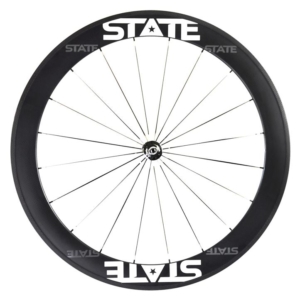Truing your wheels at home could save you money and get you back on the road
If you have some free time you should practice a new skill – truing a wheel!
Before diving into the details, understand what ‘truing’ means. Often times, hitting potholes, curbs, and foreign objects can adjust your wheel, making it different than before. Truing a wheel means to shape it or adjust it exactly as it was before.
What you need:
Truing a severely bent or out-of-true wheel can be more of a task or cause more problems than you are willing to deal with. However, for those small wobbles in your wheel, here are some easy tips to get you back on the road without running your brakes unsafely open.
The wheel consists of:

– hub: center of the wheel
– rim: outside of the wheel that the tire is put on
– spokes: connects the hub to the rim
– nipples: small metal pieces holding individual spokes in the rim (the nipple is the part that is tightened or loosened to adjust
Directions:
- find the place where the rim is rubbing the brake pad
- locate the spoke nipple that is opposite the side that is rubbing
- tighten that spoke nipple with a spoke wrench (Remember to only turn the spoke nipple a quarter turn at a time. To tighten a spoke, turn the nipple clockwise. To loosen the spoke, turn the nipple counter-clockwise.)
- always start at the worst spot and work your way from to the least out-of-true spot
- keep going until the wheel no longer rubs the brakes
When you’re done, clean your bike with these tips to get it ready for your next ride. Remember: truing a wheel requires tension in the spokes to be perfectly balanced. This generally takes a bit of patience and practice. If needed, call James Balentine at City Limit Cycles. He’ll visit you at home or at work and take great care of your bike.

